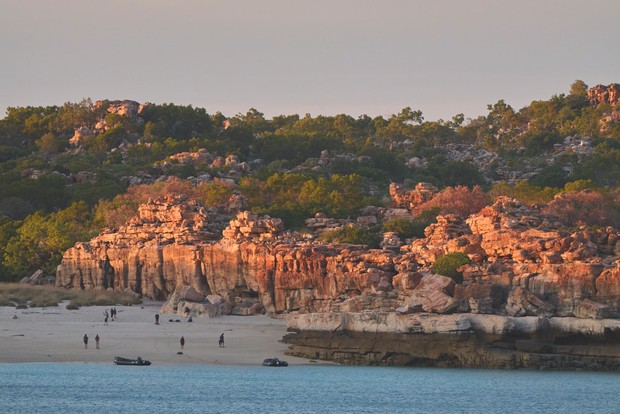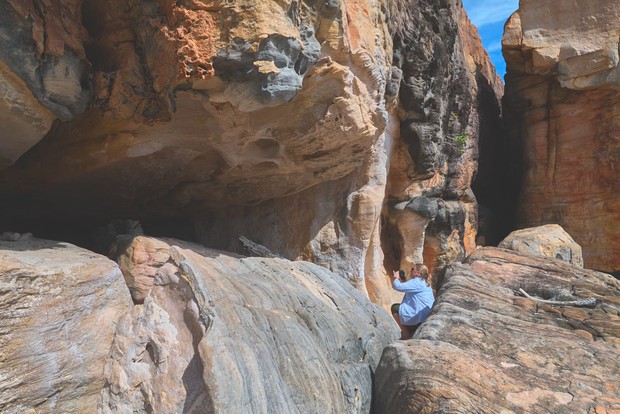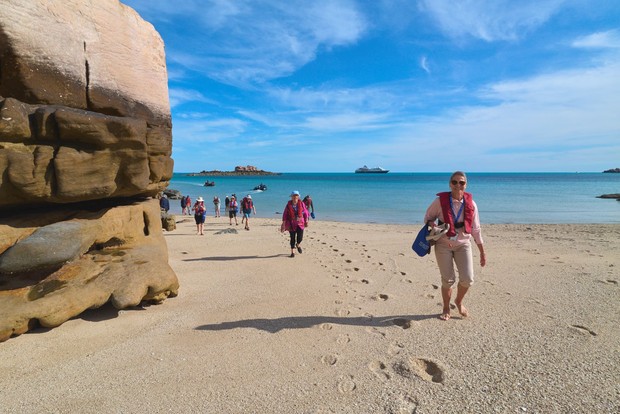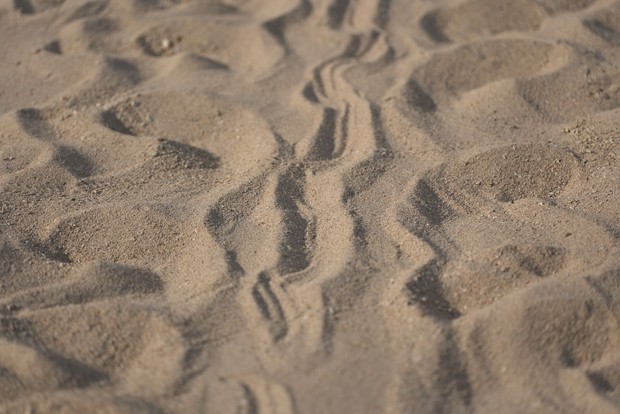31 Jul 2025
A Bigge adventure on the Kimberley Coast

This morning featured a bright, cloudless sky setting a stunning scene for adventure. With the Zodiacs awaiting us at the gangway, we made our way to Wary Bay on the northern side of Bigge Island - the second-largest island along the Kimberley Coast. The Expedition Team led us around the beach checking out the various tracks that remained in the sand from the nocturnal creature's activities, Quoll prints, Rock-wallaby prints and even turtle tracks were there to be seen.
Heading up the beach across the sandstone rock formations, passing the Rock Fig and Kakadu Plum trees, we came to a lookout to view what is known as the ‘men's’ area of the island and saw the mangrove forest below in fine form. To end our walk around the beach we were treated to beautiful rock art, this time the Galaru Wandjina ‘Father Kaiara’. This Wandjina features the upper half of the body, a horseshoe-shaped headdress, a bright white face and black eyes carved into the sandstone. ‘Father Kaiara’ was proudly painted on the Wunaamin Miliwundi sandstone surrounded by other figures, animals and plants depicted on the rock faces.
The last treat was to head into the sandstone cave system, past a painted ray on the way, to see some of the first known contact art - contact with Abel Tasman as a depiction of the first Europeans to make contact with the Indigenous First Nations people of the area. The afternoon was spent at sea, and a sunset was a beautiful way to end a wonderful day.
Images © E. Bell, Heritage Expeditions



Another beautiful warm morning greeted us in the Kimberley Coast. After a delicious breakfast, our Zodiacs were at the ready and we headed ashore o…READ MORE
With the tides working in our favour, we enjoyed a leisurely breakfast and headed out on the Zodiacs for a beach landing at Vansittart Bay. With th…READ MORE
After a morning of briefings and presentations, the first excursion on our Kimberley Explorer voyage was fast upon us after a tasty lunch. The Zodi…READ MORE









